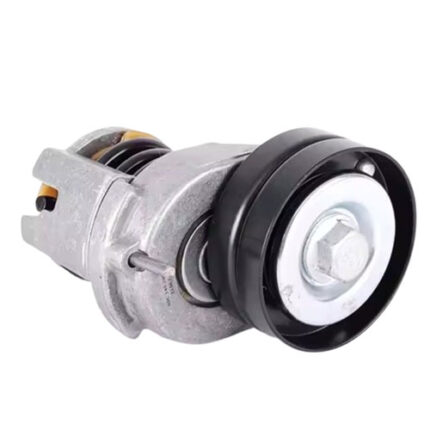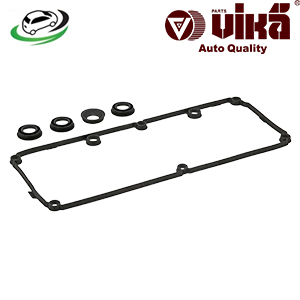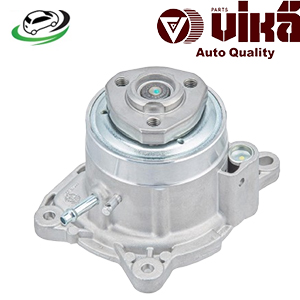-7%
Get AUDI CBZA/CBZB Water Pump 03F121004B in Kenya
The water pump is a crucial component of a vehicle’s engine cooling system, playing a key role in maintaining the optimal operating temperature of the engine. Understanding how the water pump works, its importance, common signs of failure, and maintenance can help ensure your engine runs efficiently and avoid potential overheating issues.
What is a Water Pump?
The water pump is a mechanical device that circulates coolant (a mixture of water and antifreeze) through the engine and the radiator. Its primary function is to keep the engine at the proper operating temperature by moving coolant through the engine block, cylinder head, and radiator. By doing so, it helps to dissipate heat generated by the engine during operation.
How Does the Water Pump Work?
The water pump operates as follows:
- Circulating Coolant: The water pump has an impeller, a spinning component with blades or vanes, which draws coolant from the radiator into the pump. As the impeller spins, it creates a flow of coolant that is pushed through the engine.
- Pushing Coolant Through the Engine: Once the coolant is inside the water pump, the impeller pushes it through the engine block and cylinder head. This process allows the coolant to absorb heat from the engine components.
- Returning Coolant to the Radiator: After absorbing heat, the hot coolant flows back to the radiator, where it is cooled by airflow as the vehicle moves or by the radiator fan. The cooled coolant is then circulated back into the engine by the water pump, completing the cycle.
Why is the Water Pump Important?
The water pump is essential for several reasons:
- Prevents Overheating: The primary role of the water pump is to prevent the engine from overheating. By circulating coolant, it helps to dissipate the heat generated by the engine’s combustion process, keeping the engine temperature within the safe operating range.
- Maintains Engine Efficiency: Proper cooling helps maintain the engine’s efficiency and performance. An overheated engine can lead to reduced power output, increased fuel consumption, and poor overall performance.
- Protects Engine Components: Overheating can cause serious damage to engine components, including warping of the cylinder head, damage to gaskets, and even engine seizure. The water pump helps prevent such damage by ensuring the engine remains at a stable temperature.
- Enhances Longevity: By keeping the engine within its optimal temperature range, the water pump helps to extend the life of the engine and its components, reducing the need for costly repairs and replacements.
Signs of a Failing Water Pump
A failing water pump can lead to engine overheating and other issues. Recognizing the signs of a malfunctioning water pump can help you address the problem before it causes significant damage. Common signs include:
- Coolant Leaks: One of the most noticeable signs of a failing water pump is a coolant leak. You may find puddles of coolant (usually green, orange, or pink fluid) under your vehicle, especially near the front of the engine. Leaks can occur from the pump’s seal or gasket.
- Overheating Engine: If the engine temperature gauge consistently reads high or if you notice steam coming from under the hood, it could indicate a problem with the water pump. Overheating can be caused by inadequate coolant circulation due to a failing pump.
- Unusual Noises: A failing water pump may produce a whining or squealing noise, often caused by a worn-out bearing or a loose pulley. These noises typically increase with engine speed.
- Rust or Corrosion: Inspecting the water pump for rust or corrosion can indicate that the pump is failing or that coolant is leaking onto the pump. Corrosion can lead to leaks and reduced efficiency.
- Coolant Circulation Problems: If you notice that your vehicle’s heater is not working properly or if you experience fluctuating engine temperatures, it could be due to poor coolant circulation caused by a failing water pump.
Maintaining the Water Pump
Proper maintenance of the water pump is key to ensuring it functions effectively. Here are some tips for maintaining the water pump:
- Regular Coolant Changes: Regularly changing the coolant helps keep the cooling system clean and prevents corrosion that can affect the water pump. Follow the vehicle manufacturer’s recommendations for coolant replacement intervals.
- Inspect for Leaks: Periodically check for signs of coolant leaks around the water pump and the cooling system. Address any leaks promptly to prevent damage and overheating.
- Check Belts and Hoses: The water pump is driven by a belt, typically the serpentine belt or timing belt. Regularly inspect these belts and hoses for signs of wear or damage, and replace them as needed to ensure proper operation of the water pump.
- Listen for Unusual Noises: Pay attention to any unusual noises coming from the engine, such as squealing or rattling. These noises can indicate problems with the water pump or the belt that drives it.
- Follow the Maintenance Schedule: Adhere to the vehicle manufacturer’s maintenance schedule for the water pump. Regular inspections and timely replacements can help prevent issues and ensure the cooling system remains in good condition.
Replacing the Water Pump
If the water pump fails or shows signs of significant wear, it’s important to replace it promptly. Here’s a general guide to replacing the water pump:
- Preparation: Gather the necessary tools, including a wrench or socket set, and obtain a new water pump. Ensure the engine is cool before beginning work.
- Drain the Coolant: Before removing the water pump, drain the coolant from the radiator to prevent spills. This can typically be done by opening the drain valve at the bottom of the radiator.
- Remove the Belt: Remove the serpentine belt or timing belt that drives the water pump. This may require loosening or removing other components to access the belt.
- Remove the Old Water Pump: Unbolt and remove the old water pump. Be prepared for some coolant to spill out during this process. Clean the mating surfaces on the engine block to remove any old gasket material or residue.
- Install the New Water Pump: Position the new water pump and secure it with the bolts. Make sure the new pump is properly aligned and tightened according to the manufacturer’s specifications. Install a new gasket or seal to ensure a proper fit.
- Reinstall the Belt: Place the serpentine belt or timing belt back onto the pulleys. Ensure it is properly aligned and tensioned according to the vehicle’s specifications.
- Refill the Coolant: Refill the cooling system with the appropriate type and amount of coolant. Bleed any air from the system to ensure proper circulation and prevent overheating.
- Test the System: Start the engine and allow it to reach operating temperature. Check for any signs of leaks or unusual noises. Ensure that the coolant is circulating properly and that the engine temperature remains stable.
Follow us on Facebook for more parts.



